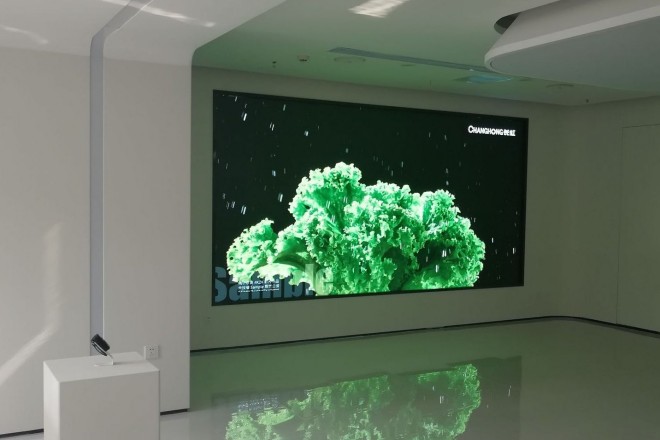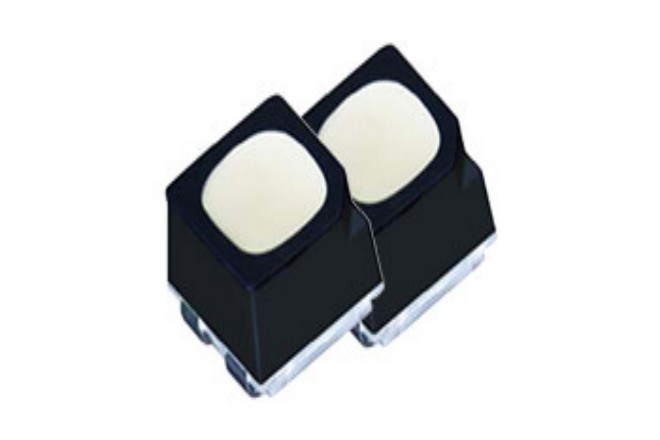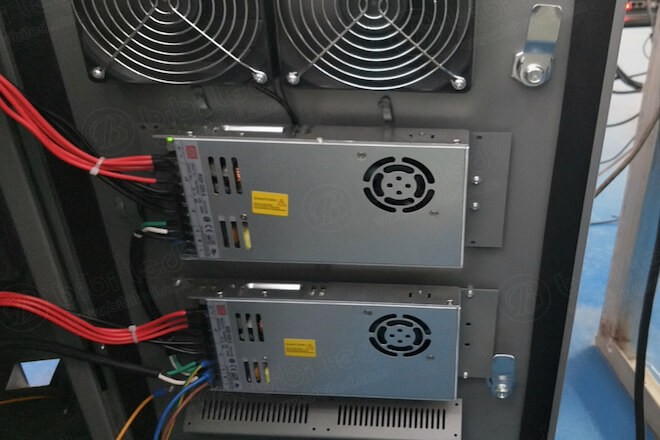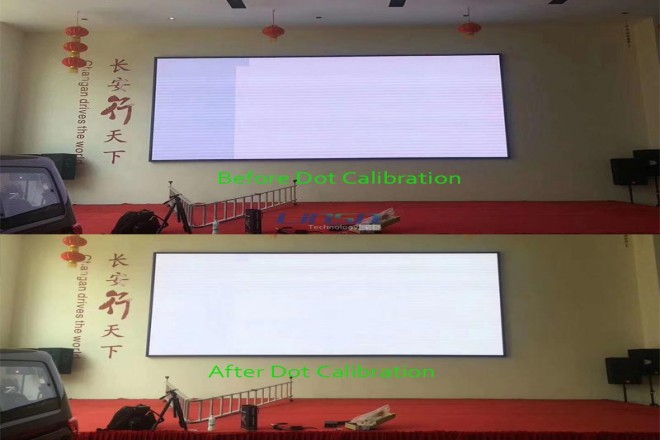Introduction

Écrans d'affichage LED have become an important medium for information dissemination with their bright colors and dynamic display effects. However, the problem of inconsistent brightness may affect its display effect and even damage the audience’s viewing experience.
This article will explore the common reasons for the inconsistent brightness of LED display screens, help users understand the problems behind them, and take corresponding solutions.
Reason 1: Uneven quality of LED display lamp beads

LED display screens are composed of thousands of tiny LED lamp beads, which are like “pixels” of the screen. Together, they determine the images, colors, and brightness that the screen can display.
Therefore, the performance of each LED lamp bead is crucial. If the quality of the lamp bead is uneven, the display effect of the entire display will be affected.
If you are watching an LED display screen, but find that some places on the screen are particularly bright and some places are relatively dark, such a viewing experience is definitely not good. This is caused by the inconsistent brightness of the LED lamp beads.
LED lamp beads of different brands or batches may have different luminous intensities. Even in the same batch, differences in production processes and raw materials may cause inconsistent brightness between lamp beads.
1). How to avoid these problems?
- Choose a reliable supplier:
When buying an LED display, first choose a supplier with a good reputation and rich experience. Such suppliers usually have a stricter quality control system and can provide more stable and higher-quality LED lamp beads. Such as: Nationstar and Kinglight.
- Check the quality of the lamp beads:
Before purchasing, you can ask the supplier to provide samples of the lamp beads for testing. Through testing, you can understand the key performance parameters such as brightness, color, and life of the lamp beads.
In addition, you can also check the lamp bead test report and certification certificate provided by the supplier to ensure that its quality meets the relevant standards and requirements.
- Strengthen screen detection:
After the screen is installed, a comprehensive inspection and calibration work should be carried out. This includes checking the brightness uniformity, color accuracy, and contrast of the screen.
If any problems are found, communicate with the supplier in time and seek solutions.
- Entretien régulier :
Even the highest quality LED display requires regular maintenance. This includes cleaning the screen, checking the working status of the lamp beads, and replacing failed lamp beads.
Regular maintenance can extend the service life of the display and maintain its good display effect.
Reason 2: LED display power stability problem

Just like the electric lights in our homes need stable current to emit light normally, LED displays also need stable source de courant to ensure that each lamp bead can emit light evenly and brightly.
If the power supply is unstable, the display will have problems such as uneven brightness, flickering or black screen, which not only affects the viewing experience, but also may shorten the service life of the display.
Sometimes, the power supply and the display may be far apart, which requires long wires to transmit electricity. However, when the current flows in the wire, it will lose some energy due to the resistance of the wire, resulting in a decrease in voltage.
This is just like when we use a water pipe to transport water; if the water pipe is too long or too thin, the pressure of the water flow will be reduced. The voltage reduction will cause the lamp beads on the display to emit insufficient light, dim the brightness, and even malfunction.
1). How to solve it?
- Use a good power supply:
Choosing a good quality power supply is like finding a reliable “energy source” for the display. Such a power supply can provide stable current and voltage to ensure the normal operation of the LED display.
- Shorten the transmission distance:
If possible, try to place the power supply close to the display and reduce the length of the wire. In this way, the energy lost by the current in the wire will be reduced, and the voltage will be more stable.
- Use enhanced wires:
If the distance between the power supply and the display cannot be shortened, consider using thicker wires or special wires (such as wires with shielding layers), which can reduce the loss of current and improve the stability of voltage.
Reason 3: The color calibration of the LED display is not accurate

Color calibration is very important for LED displays. It is like a “color commander” to ensure that each pixel on the screen emits the correct color and brightness.
This is just like we need to adjust the white balance of the camera when taking pictures to ensure that the colors of the photos are real and natural.
If the color calibration is not accurate, color distortion and uneven brightness may appear on the screen, affecting our viewing experience.
1). How do we solve the color calibration problem?
- Ask the supplier:
When purchasing a screen, you can ask the supplier whether it has been strictly color-calibrated and ask to see the relevant calibration report or ask them to send you a video or picture taken during calibration.
Choosing suppliers with professional calibration equipment and processes can greatly improve the color accuracy of the screen.
- Use professional tools to adjust:
If you find that the screen color is inaccurate or the brightness is inconsistent during use, you can use professional color calibration tools to adjust it.
These tools can accurately measure the color and brightness parameters of the screen and make adjustments based on the measurement results to ensure that the screen display effect is optimal.
However, please note that calibration is a relatively professional matter, so it is not recommended that you do it yourself. It is recommended that you contact the LED display supplier.
Reason 4: Temperature influence of LED display

Temperature will also have a great impact on the display effect and service life of the LED display. Temperature changes will not only affect the light efficiency of the LED lamp beads, but may also cause inconsistent screen brightness, thus affecting the viewing experience.
Since LED displays are usually composed of multiple LED lamp beads, the luminous efficiency of each lamp bead may be affected by temperature.
Therefore, when the working environment temperature of the entire screen is uneven, the problem of inconsistent brightness may occur. Specifically, it is manifested as follows:
In high-temperature areas, the luminous efficiency of LED lamp beads decreases, and the brightness becomes dimmer;
In low-temperature areas, the luminous efficiency of LED lamp beads is relatively high, and the brightness is brighter.
This brightness inconsistency will not only affect the viewing experience, but may also accelerate the aging process of the screen and shorten its service life.
1). Solution
- Keep the working environment temperature stable:
Try to install the LED display in an environment with small temperature fluctuations, and avoid exposing it to extremely high or low-temperature conditions.
If temperature changes cannot be avoided, appropriate insulation or heat dissipation measures can be taken to stabilize the working environment temperature. For example, add a sunshade ceiling or install heat dissipation equipment.
- Set up heat dissipation device:
For outdoor or high-brightness LED displays, heat dissipation devices such as fans, air conditioners or heat sinks can be set to reduce the working temperature of the screen.
The selection and installation of heat dissipation devices should be determined according to the actual size, power and working environment of the screen to ensure good heat dissipation.
- Entretien et inspection réguliers :
Regularly maintain and inspect the LED display to promptly discover and deal with potential faults and problems.
Especially in high temperature seasons or after long-term use, the heat dissipation and temperature monitoring of the screen should be strengthened to ensure its normal operation.
Conclusion
Although the problem of inconsistent brightness of LED displays is common, effective preventive and adjustment measures can be taken by understanding the causes behind it.
Ensuring a stable power supply, selecting high-quality LED lamp beads, performing accurate color calibration, and controlling the appropriate working environment temperature are all key to improving the brightness uniformity of the display.
Through these methods, we can effectively improve the display quality of LED displays and ensure the clarity and accuracy of information dissemination.
However, please pay attention to electrical safety when repairing it yourself. It is better to ask professionals to do the operation for safety.
Enfin, si vous souhaitez en savoir plus sur les écrans LED, veuillez nous contacter.
